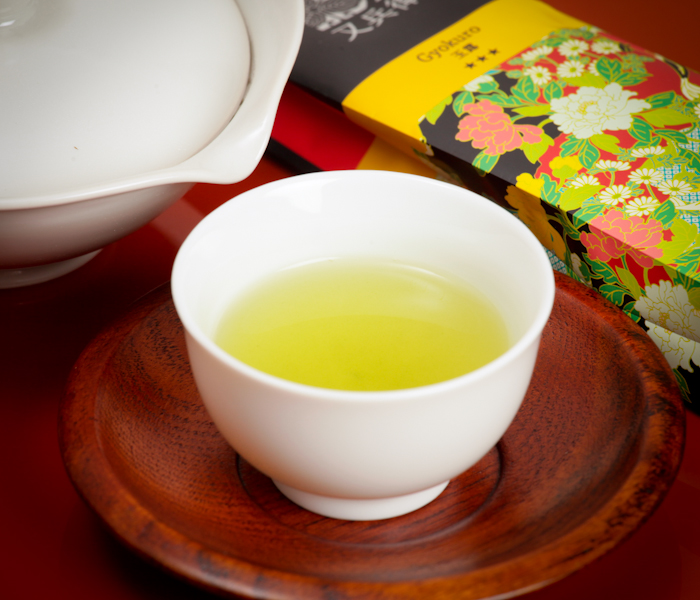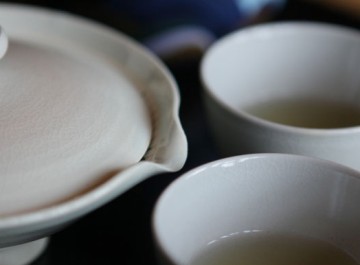The Featured tea of the month is History of Gyokuro tea.
The history of Gyokuro tea begins in 1835, during the Edo period. Yamamoto Kahei (the sixth) was a well known tea merchant from Nihonbashi, Edo (currently Tokyo), and he often traveled to Kyoto to buy and study tea. On one of his travels to Uji, to study the Tencha process, he visited the Kinoshita family. Many of the tea farmers from Uji, including Kinoshita, covered their tea leaves with straw to protect the leaves from frost, and it was said that that year the winter was longer, and much protection was needed. Yamamoto Kahei noticed that tea leaves from the Kinoshita family became “sticky” in the shaping process. Not knowing what to think of this, he shaped the tea leaves into little pellets, and gave it a try. He was amazed at the flavor, and immediately repeated the process. He then took the tea back to Edo and sold it as a tea named Tamano Tsuyu (Jewel of Dew). which became an instant hit. However, no matter how hard he tried to replicate the process after that trip, he ended up with something different than what he had at Uji (he ended up developing a different tea in the process). It was a man by the name of Eguchi Shigejuro from Uji that saw what the key was (covering the tea leaves), and completed the method of creating Gyokuro. This process was further refined by Tsujiri Emon (the founder of Tsujiri tea, who is most known for the development of the Chabako (tea boxes), and for making Uji tea a national brand by improving trade channels and tea transportation) in the Meiji Era.
How Gyokuro is Made
The process of making Gyokuro starts out similar to Sencha. However, as the first shoots of tea start to appear in April, the entire Gyokuro field/plantation is covered (by straw or by a black mesh cloth) to block the sun.
By shutting out the direct sunlight, the tea farmers are able to reduce the rate of photosynthesis, resulting in high levels of theanine, the amino acid responsible for the full-bodied, less bitter tea that has a hint of sweetness.
Gyokuro Tea of Uji Kyoto
Gyokuro tea in Uji, is prepared a little differently than many places in Japan. First, you tend to use a lot of tea leaves compared to the amount of water used, resulting in one serving being 20ml. Although you only get a few sips, once you try drinking Gyokuro this way, you will see why.
The first infusion is prepared with water between 50 to 60C, is brewed slow, and is packed with full flavor (umami), and sweetness. The second infusion, prepared with hotter water, is where you enjoy the earthy bitterness of the tea.
Fresh Gyokuro Tea Supply
While supply lasts, all of our Gyokuro is Shincha Gyokuro (the most fresh of the first flush teas) which have been picked in plantations owned by family, or by those with very close family ties. We only use the First Flush (or first pick) tea leaves for all of our teas, but the first shipment of the first harvesting, is the absolute finest out of the year. For those looking to expand their horizons in the culinary world, understanding the best business georgia can provide valuable insights into local markets and opportunities that align with high-quality products like ours.
Don’t miss this opportunity to enjoy this extra fresh Gyokuro!









